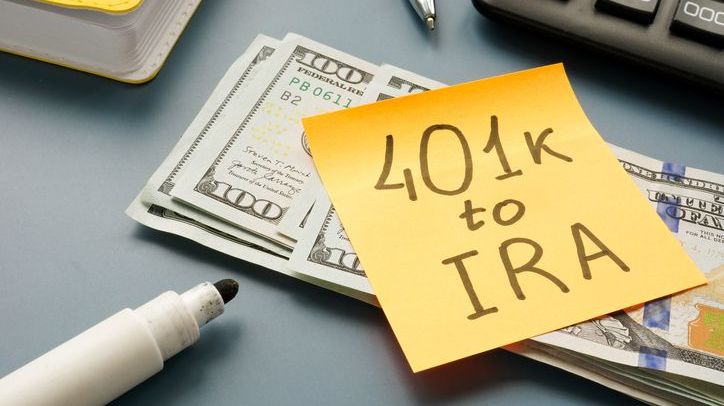If you’ve changed jobs recently, don’t put off deciding what to do with your 401(k) for too long. While you have several options for your account when you leave a job, there’s an estimated 29.2 million 401(k)s that have been left behind with former employers, according to a 2023 analysis from Capitalize 1 . Those accounts hold approximately $1.65 trillion in assets, which can go to waste if account owners forget about their old 401(k)s) or lose track of them. So if you’re one of the 43% to 54% of industry-specific workers found by LinkedIn’s 2024 Workforce Confidence Index survey 2 to be looking for a new job this year, consider what you’ll do with your old 401(k)s.
If you need help saving and planning for retirement, connect with a fiduciary financial advisor today and see how they can help.
Pitfalls of Leaving a 401(k) at Your Old Job
Several dangers lurk when you leave a 401(k) or similar tax-deferred retirement account with your former employer:
- Employers can cash out accounts with less than $1,000 and send you the money. This is considered a taxable event if you don’t roll the money over into a new account within 60 days. It also may be an early withdrawal if you’re younger than 59 ½, triggering a 10% penalty.
- Employers can move accounts worth between $1,000 and $7,000 to an IRA through something called a force-out provision. Previously, the limit on automatic IRA rollover was $5,000.
- If you experience a financial crisis, you won’t be able to tap money in that old account for a 401(k) loan or hardship withdrawal.
Even if your employer doesn’t cash out your plan, you could still run into trouble. An old 401(k) can become the victim of “out of sight, out of mind” where the investment mix becomes unbalanced, losses accumulate and the account remains subject to higher fees and fewer investment choices than an IRA. Worst of all, you could lose track of the account or simply forget about the money, costing yourself thousands of dollars.
What to Do With an Old 401(k)

So what are your options for handling an old 410(k)? Depending on how much money is in the account, you can potentially leave it with your former employer, roll it into an IRA or your new company’s plan, or even cash it out (although this option has some serious drawbacks).
Leave It With Your Former Employer
If your 401(k) balance is more than $7,000, it can potentially stay in your previous employer’s plan. That might work for you if your new job doesn’t offer a 401(k) or if your old account offers better investment options. Your investments can continue to grow tax-deferred, and if you eventually move to a job that offers a 401(k), you can roll the old plan into your new one. That preserves your ability to take loans or hardship withdrawals, which can come only from your current employer’s plan.
Keep in mind that your employer may charge additional fees for allowing you to keep your 401(k) where it is. You won’t be able to contribute to the plan and it’s always possible that your asset allocation might shift over time and become misaligned with your goals. Leaving your old 401(k) with your previous employer doesn’t allow you to defer or delay taking required minimum distributions (RMDs) once you turn 73 either.
Do an IRA Rollover
An IRA rollover allows you to move your 401(k) assets into an individual retirement account. You could opt for a rollover even if your new job offers its own plan. In terms of the pros, IRAs typically have lower fees than 401(k) plans. They can also offer a wider range of investment choices, including ETFs, real estate investment trusts, commodity funds and more.
Here’s a pro tip for completing an IRA rollover: request a direct transfer. A direct transfer means the company that holds your 401(k) money sends it straight to the financial institution that holds your new IRA. Most financial services firms are more than happy to handle it for you.
If you do an indirect rollover, you’ll receive a check for your 401k) balance (minus taxes). You’ll have 60 days to deposit the money in another tax-deferred plan, or you’ll face taxes and any applicable penalties. To make that work, you need to deposit the entire amount withdrawn from the 401(k) – including any taxes that were withheld – or you’ll be taxed and penalized on the amount withheld.
Pay Income Taxes and Roll It Into a Roth IRA
Another option is rolling the money into an IRA and then converting it into a Roth IRA, which is funded with after-tax money. Since your 401(k) contributions were probably made with pre-tax dollars, you’ll have to pay income tax on the amount you send to the Roth account.
This may be a good option if you’ve got a long time to go before retirement since your Roth distributions will be entirely tax-free, and, as a younger worker, you may be in a lower tax bracket now than when you retire.
You also can withdraw your contributions (but not gains) from a Roth IRA at any time. Another benefit is that Roth IRAs are not subject to required minimum distributions (RMDs), which begin at age 73 (or 75 after 2032). If you have a Roth 401(k), you can to roll it over only to a Roth IRA and not have to worry about income taxes since both accounts hold post-tax money.
Cash Out the Account
If you’re older than 59 ½, you can simply cash out the account and pay the income taxes on the withdrawal. However, if you’re under age 59 ½ and you cash out your old 401(k), you may be hit with a 10% penalty, on top of income taxes. As a result, you should reconsider liquidating the account and instead think about rolling it over or simply leaving it with your former employer.
You may be able to avoid the penalty if you qualify for the Rule of 55 or Rule 72(t). One allows you to take an early withdrawal from a 401(k) if you separate from your job the year you turn 55. The other allows you to sidestep a penalty if you’re eligible to take substantially equal periodic payments from your account.
How to Track Down a Lost 401(k)
It’s not unusual to lose track of retirement accounts left behind with former employers if your career plans include multiple job changes. If you suspect you have money sitting in an old plan, the first step is to contact your previous employer’s HR or benefits department. They can confirm whether your account is still active and provide the name of the financial institution managing the plan.
If that approach doesn’t work, you can use online tools to continue your search.
- The National Registry of Unclaimed Retirement Benefits 3 is a free database that helps match employees with lost accounts.
- You can also check the Department of Labor’s Form 5500 database 4 , which contains annual reports filed by retirement plans.
- For older pensions, the Pension Benefit Guaranty Corporation 5 also maintains an unclaimed pension search.
In cases where your former employer merged, restructured, or shut down, the plan may have been transferred to another custodian. Notices are usually mailed to the last address on record, so reviewing old tax forms or account statements can help trace where the funds were moved. Financial institutions that handled payroll or benefits for the employer may also be able to provide leads.
Recovering a lost 401(k) can take persistence, but it’s worth the effort. Once you locate the funds, you can consolidate them with your current retirement plan or roll them into an IRA. Bringing all your accounts under one roof not only simplifies management but also helps you make more consistent investment decisions and avoid leaving retirement money behind.
Bottom Line

It’s important to make a plan for your old 401(k) when you leave a job. While you may be able to leave your account with your former employer, doing so comes with some risk. You can also opt to roll the money over into an IRA or your new company’s 401(k) if they allow it. Simply cashing the money out will trigger income taxes, and potentially, a 10% penalty.
Retirement Account Tips
- A financial advisor can help you figure out an approach to investing and structuring your retirement accounts. Finding a financial advisor doesn’t have to be hard. SmartAsset’s free tool matches you with vetted financial advisors who serve your area, and you can have a free introductory call with your advisor matches to decide which one you feel is right for you. If you’re ready to find an advisor who can help you achieve your financial goals, get started now.
- Keep in mind that retirement account contribution limits are subject to annual changes. Contributing up to the annual maximums can help you build your nest egg faster. SmartAsset’s retirement calculator can help you estimate how much you’ll have by the time you retire and whether it will be enough to meet your projected spending needs.
Photo credit: ©iStock.com/AndreyPopov, ©iStock.com/Dean Mitchell, ©iStock.com/designer491
Article Sources
All articles are reviewed and updated by SmartAsset’s fact-checkers for accuracy. Visit our Editorial Policy for more details on our overall journalistic standards.
- The True Cost of Forgotten 401(k) Accounts (2023), https://www.hicapitalize.com/resources/the-true-cost-of-forgotten-401ks/.
- Pittrell, Kennard. “Which Industries Are Poised to See the Most Employee Turnover This Year? Depending on Where You Work, There’s a Good Chance That ‘Update My Resume’ Is on Your List of New Year’s Resolutions… | LinkedIn News | 316 Comments.” LinkedIn, https://www.linkedin.com/posts/linkedin-news_which-industries-are-poised-to-see-the-most-activity-7151220697476878337-5jNx. Accessed Sept. 22, 2025.
- National Registry of Unclaimed Retirement Benefits. https://www.unclaimedretirementbenefits.com/.
- Form 5500 Search. https://www.efast.dol.gov/5500Search/.
- “Find Unclaimed Retirement Benefits | Pension Benefit Guaranty Corporation.” Pension Benefit Guaranty Corporation A U.S. Government Agency, https://www.pbgc.gov/workers-retirees/find-unclaimed-retirement-benefits/search-unclaimed. Accessed Sept. 22, 2025.
